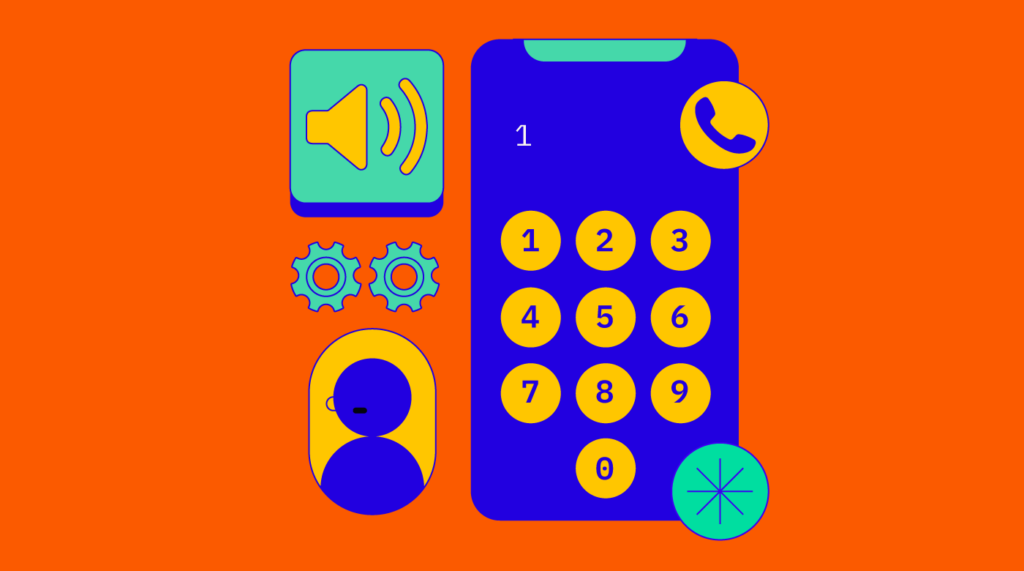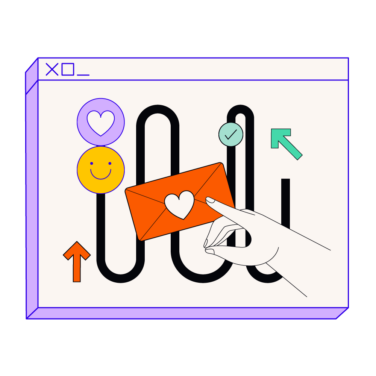Interactive voice response (IVR) systems might seem unfamiliar, but you most likely encountered one in your day-to-day life. Whenever you call a customer support line – whether a bank’s or an internet service provider’s – you spend some time listening to a more or less robotic voice instructing you to press numbers on your phone keypad or say something in order to achieve your goal. That’s an interactive voice response system.
Interactive voice response (IVR) systems are some of the most effective tools you can use to speed up your response times and improve the quality of your answers when offering phone support. They enable you to automate repetitive incoming calls, segment inquiries, and divert callers to your best-suited agents.
What is an Interactive Voice Response System?
Interactive voice response systems are tools that automatically answer inbound calls and guide callers through a menu. Depending on the menu selection, the systems can provide answers to frequently asked questions, help callers perform small tasks, or route callers to specific support teams or departments.
The Evolution of IVR Technology
IVR technology was first developed in the 1970s but wasn’t considered cost-effective until the 1990s, when the advancements in hard drive technology and processing power made it a viable option for call centers. Back then, IVR systems could only route the call flow to specific departments, but that was enough to significantly decrease wait times. Callers no longer had to talk to an operator before being transferred and they could reach their desired department faster, increasing customer satisfaction.
In the early 2000s, IVR tech became better and cheaper, so major organizations, such as governmental agencies, banks, and healthcare providers started using it. The advancements in internet telephony and cloud computing during the 2010s meant that IVR systems no longer had to be on-premises solutions, making them more affordable and easier to implement. This made IVR software attractive to new types of organizations, such as retailers, news agencies, educational institutions, and even small businesses.
The recent advancements in speech recognition, natural language processing (NLP), and artificial intelligence represent a significant step in the evolution of IVR technologies. Advanced IVR tools now combine voice recognition, AI, and text-to-speech to generate answers in real time based on an organization’s data, so they can answer FAQs outside business hours without relying on pre-recorded messages. However, this functionality is currently available only in English, so it has limited application for international businesses.
How Does Interactive Voice Response Work?
IVR systems offer callers menu options to choose from. When a caller chooses an option, they are either redirected to a new menu, transferred to a call center agent, guided through a simple task, or provided with an informative message.
Using an IVR solution increases the efficiency of call centers that deal with high call volumes, as only a portion of callers end up connecting with support agents, while the others solve their problems through fully automated processes.
Use IVR to Improve Your Customer Experience
IVR technology improves customer experience in a number of ways, including:
- Shorter hold times: The IVR menu guides callers to the right agents or departments for their needs, making their calls shorter and more efficient.
- Self-service options: An IVR application allows callers to perform various tasks without interacting with a live agent, such as checking their account balances, paying bills, learning more about a product’s pricing, or discovering the latest offers available.
- 24/7 support: Customers benefit from nonstop support without interacting with an agent. Even if some problems can’t be solved without an agent, callers can leave voicemails explaining their problems and have someone get back to them with solutions the following business day.
Benefits of IVR
If you’re still trying to convince your organization to invest in an IVR system, here are some of the key benefits you can expect for your business and your support agents.
For businesses:
- Reduced operational costs: IVR can perform several tasks agents would perform, such as call routing, processing small transactions, or providing information. This means that a call center can save money on hiring and training new service agents.
- More support capacity without extra hiring: IVR systems can help businesses maximize their support capacity without hiring more people. This, in turn, can enable service-focused businesses like call centers to add more clients to their portfolios.
- Lower first response times: Live agents can miss calls during demand spikes. The IVR’s auto attendant answers calls immediately, guides callers to the right resources or departments, and puts them on hold until an agent is available.
- Reduced call handling times: IVR systems provide customers with self-service options for common tasks, so fewer callers have to wait to talk to an agent. This can lead to significantly better call handling times.
- Improved support efficiency: When using an IVR system, callers are guided to the right departments based on their needs, so businesses can solve their problems faster.
- Increased first contact resolution: Thanks to the variety of options offered by the IVR tool, most customers can solve their problems the first time they call, leading to a better customer experience.
- More satisfied customers: IVR tools can help you solve more customer problems even if callers don’t get a resolution on their first call. Many tools offer a callback functionality that memorizes the phone numbers of customers who hang up while holding, allowing your agents to reach out to callers when available.
- Improved customer journeys: IVR solutions integrate with a variety of apps, such as contact center software, automatic call distribution (ACD) tools, or customer relationship management (CRM) platforms, and share data through API connections. This helps you gain a better understanding of your callers so you can optimize your customer journeys.
For customer service agents:
- Reduced workload: With an IVR phone system, agents don’t have to perform certain tasks, such as call distribution, answering FAQs, or approving small transactions, so they handle fewer tasks on a day-to-day basis.
- More time to focus on complex inquiries or high-value tickets: The IVR system automatically answers common questions and routes customer calls, so service agents can dedicate more time to solving complex inquiries or high-value tickets that count toward their KPIs.
- Increased job satisfaction: Customer service jobs can be demanding due to poor interactions and stress, but automation can reduce some of that burden and increase job satisfaction.
Challenges of IVR
Implementing any new technology always comes with challenges, and IVR software is no different. To give you a balanced overview, here are some challenges of IVR software you should also be aware of:
For businesses:
- High upfront costs: Even though IVR systems are more affordable now than in the previous decade, the costs can still be steep, especially for small and medium-sized businesses.
- Complex design and implementation: IVR solutions are generally not something you can implement on your own. You have to design the customer journeys for multiple types of customers who want to achieve different outcomes, so the implementation difficulty is proportional to your organization’s complexity.
- Ongoing maintenance and support costs: An IVR system is not something you can set and forget. You have to update your customer journeys constantly, as you learn more about your callers or your product changes.
For customer service agents:
- Risk of poor customer interactions: IVR systems that are not well optimized can create friction, resulting in irritable callers. In addition, there’s always a small proportion of callers who don’t know how to navigate the IVR menu, so they’re already annoyed by the time they connect with a live agent.
- Poor call routing: Some people will choose any option in the IVR menu just to get in touch with a human being, even if they’re routed to the wrong department. Handling callers who use this approach can be frustrating.
- Calls replace other tasks: The IVR system handles some of the tasks normally attributed to service agents, so they end up spending most of their workdays on calls rather than switching from one type of task to another, which can make their work boring.
Simplify Your Customer Service Calls With Interactive Voice Response Systems
Interactive voice response systems can help you maximize your support capacity, reduce your operational costs, and improve customer satisfaction – all while making your team’s life easier. And even though designing IVR pathways can be complicated, well-optimized systems can lead to more loyal, happy customers.
If you want to learn more about call center solutions, check out the Brand-Agnostic Guide to Inbound Call Center Solutions and our list of the best call center software to find the best fit for you.
Subscribe to the CX Lead to stay up to date with the latest strategies, leadership tips, and trends in the CX industry.


